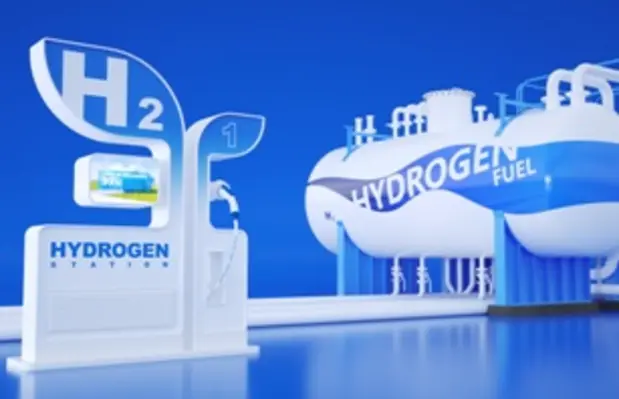Despite Egypt’s gas sector roaring back to life in recent years it is other innovative niches, such as hydrogen, that may offer the greater potential long-term, says Martin Clark
The government has made it a priority to explore alternative energy sources, in keeping with global plans to reduce carbon emissions, especially after hosting the COP27 climate conference in Sharm el-Sheikh at the end of 2022. Egypt has been proactive in rolling out utility-scale solar and wind farms to complement gas-fired power generation, though attentions are now turning to more advanced energy technologies, including hydrogen.
There appears to be a lot of momentum in this area too, with development finance groups pledging large sums of money and even some of the big oil names showing an interest.
At the COP27 summit, Egypt signed eight framework agreements to develop green hydrogen and ammonia projects with a number of well-known industry partners. The agreements signed were with companies including AMEA Power, Alfanar, TotalEnergies, Globeleq, EDF, Fortescue Future Industries , ReNew and Scatec, and are mainly concentrated around the Red Sea port of Ain Sokhna and the Suez Canal Economic Zone.
Going forward, Egypt hopes to position itself as a regional hub for the nascent hydrogen sector.
Egypt Green
Egypt looks to have plenty of support behind its ambitions too. The European Bank for Reconstruction and Development (EBRD) is supporting the decarbonisation drive with a US$80mn loan to Egypt Green to develop the country’s first green hydrogen facility.
Egypt Green is owned, built and operated by Fertiglobe, one of the largest seaborne exporters of combined urea and ammonia; Scatec ASA, a Norwegian power producer; Orascom Construction, and the state-owned Sovereign Fund of Egypt. The cash will be used to build a 100 MW electrolyser facility to be powered by renewable energy. When developed, it will deliver up to 15,000 tonnes of green hydrogen annually. This, in turn, will be used as an input for the production of green ammonia to be sold on the Egyptian and international markets.
Ammonia production is energy intensive and responsible for around 1.8% of global carbon dioxide (CO2) emissions. At full capacity, the facility’s green hydrogen production could save more than 130,000 tonnes of CO2 emissions per year.
“We see a massive green hydrogen demand driven by strong policy support globally, and Africa is perfectly positioned to take advantage of its low-cost renewables and strategic position,” said Mikkel Tørud, chief financial officer at Scatec ASA.
BP’s diversification drive
The major oil companies in Egypt have also shown similar intent. In December, BP, which has a long-established presence in the country and significant investments in oil and gas, signed a memorandum of understanding (MoU) with the government to explore the potential for establishing a green hydrogen facility. Under the MoU, the energy giant will carry out studies to evaluate the technical and commercial feasibility of developing a multi-phase, large scale green hydrogen export hub in Egypt, including exploring possible sites and locations.
The MoU was signed by with Egypt’s New and Renewable Energy Authority (NREA), the Egyptian Electricity Transmission Company (EETC), the General Authority for Suez Canal Economic Zone (SCZONE) and the Sovereign Fund of Egypt for Investment and Development (TSFE).
Hydrogen is one of BP’s five energy transition growth engines, and the group is working on a portfolio of options for the development of green and blue hydrogen projects globally.
“Expanding the remit of our business in Egypt is testament to BP’s long-term commitment to Egypt,” said Nader Zaki, BP’s regional president, Middle East and North Africa. “This MoU builds upon Egypt’s endeavours to be a regional energy hub, and we are glad to be able to be a strategic partner to support the country’s green energy transition plans.”
You can read the full article on p18 of the latest issue of Oil Review Middle East









